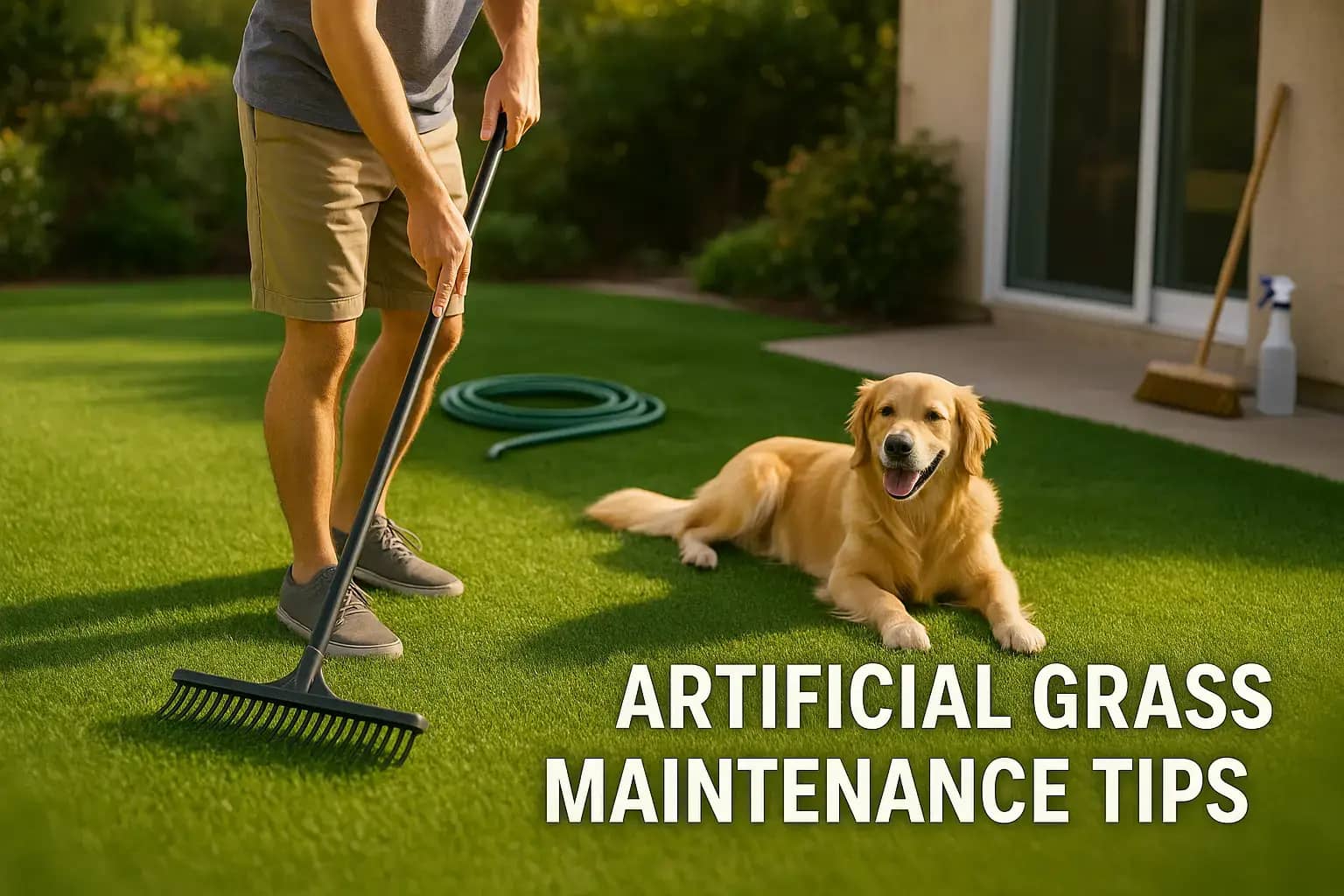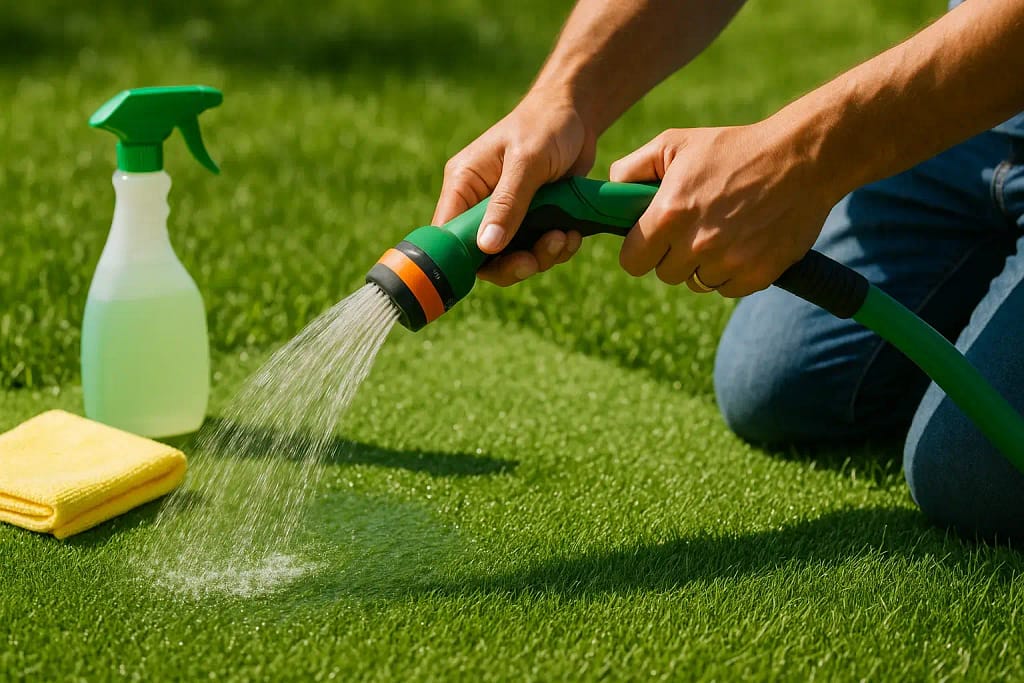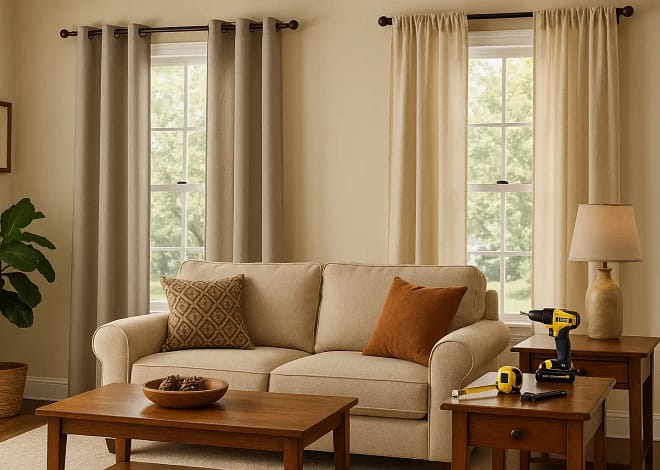
Artificial Grass Maintenance Tips to Keep Your Lawn Fresh All Year
Let’s be real having a perfectly green lawn without ever mowing it feels like some kind of suburban sorcery. Artificial grass? It’s the modern homeowner’s answer to high water bills, patchy brown spots, and the eternal war with weeds.
But here’s the kicker: just because it’s fake doesn’t mean it’s maintenance-free.
If you’ve ever walked barefoot across synthetic turf and thought, “This is the life,” you’re not alone. Artificial grass has come a long way from the scratchy, carpet-like stuff we grew up with. Today’s turf looks and feels almost as good as the real thing sometimes better. Still, it needs a bit of TLC to keep that fresh, lush look going strong.
Whether you’ve just installed a brand-new turf in your backyard, or your synthetic lawn’s been around for a few summers, this guide’s for you. Let’s talk all about keeping that grass looking gorgeous with just the right mix of casual effort and smart know-how.
Why Bother With Maintenance? It’s Fake, Right?

That’s the myth, isn’t it? People assume artificial grass is a one-and-done solution. Lay it down and forget it. But think about your kitchen floor for a second it’s not real soil, but you still clean it, right? Same idea here.
Artificial turf doesn’t grow, sure but it still collects debris, absorbs spills, traps odors (especially if you’ve got pets), and can start looking flat and tired if you neglect it. Just like any outdoor surface, it’s exposed to weather, dust, pollen, and the occasional BBQ sauce spill.
So yeah, maintenance matters. But the good news? It’s not rocket science. And it’s actually kind of satisfying once you get into the rhythm of it.
Grab a Brush, Not a Lawnmower
Weeklybrushing is probably the single most underrated thing you can do for your turf.
A good stiff-bristled broom or better yet, a turf-specific brush can fluff up those grass blades that tend to lay flat over time, especially in high-traffic zones (you know, where the dog loves to do Zoomies or the kids kick a soccer ball 400 times a week).
You’re not just doing this for looks. Brushing also helps redistribute the infill (that sand or rubbery stuff between the blades), which keeps the turf soft underfoot and helps with drainage. Think of it as giving your lawn a little posture correction.
Pro tip: Always brush against the grain of the grass for best results.
Cleanliness Is Next to Turf-liness (Sorry, Had To)
Okay, jokes aside, cleaning your artificial grass isn’t optional especially if pets are in the picture.
You don’t need fancy equipment here. A regular rinse with a garden hose every week or so goes a long way in preventing dust buildup and keeping things fresh.
But let’s say your dog’s favorite bathroom happens to be the corner of your lawn. In that case, you’ll want to go a little deeper:
- Scoop solids like usual
- Hose down the area to dilute
- Spray with a mild vinegar-water mix (1:1 ratio) to deodorize
- Let it dry under sunlight (nature’s best disinfectant)
You can also pick up enzyme-based turf deodorizers made for pet areas. Brands like Simple Green Outdoor Odor Eliminator or Angry Orange are solid choices and they won’t torch your turf or your nostrils.
Pet Owners, This One’s For You
Let’s face it: Dogs don’t care whether your grass is real or synthetic. If it smells like a good spot, that’s all they need. And synthetic grass, with its quick drainage and easy-to-clean surface, is actually a pretty great option for pet families.
But, if you skip the cleaning, that ammonia smell from pet urine can build up fast. (Like, hit-you-in-the-face fast.)
Set up a regular rinse schedule daily in hot months if your pets are frequent fliers. And don’t forget to brush the area often. Pet paws tend to mat down turf quickly.
Bonus tip? Keep a spray bottle of diluted vinegar or pet-friendly turf cleaner near your back door for quick spritzes when your furry friend finishes their business.
Can You Vacuum or Power Wash Turf?
You can, but should you?
Let’s break it down:
Vacuuming
- For indoor turf? Sure, knock yourself out.
- For outdoor turf? Nah. It’s not the best idea. Vacuums can suck up infill, damage fibers, and frankly, it’s just awkward.
Power Washing
- You can do it if your turf’s especially grimy but gently. Set your washer to a gentle spray and hold the nozzle about a foot away from the turf getting too close could displace the infill or wear down the backing.
A better solution? Stick with a good ol’ hose for regular cleanups. If something nasty happens (like a food spill or a mudslide from your kid’s failed science experiment), spot treat it with soap and water first.
Seasons Change So Should Your Turf Routine
One of the great things about synthetic grass is that it doesn’t die on you when summer hits 100°F or when winter decides to drop by unannounced.
Even so, giving your turf a bit of seasonal attention can make a big difference:
Summer Artificial Grass Maintenance Tips
- Rinse more often especially in dusty areas or places with a lot of foot traffic.
- Keep an eye on plastic items (like toys or furniture); they can melt onto hot turf.
- Got pets? Odor control becomes a priority in the heat.
Winter Artificial Grass Maintenance Tips
- Snow’s fine it’ll melt and drain like rain.
- Avoid using metal shovels (they can tear the grass). Use a plastic snow shovel or just let nature do its thing.
- Brush occasionally to keep blades from flattening under snow weight.
Weed Control: Still a Thing
Yes, weeds can still creep into your synthetic paradise. Especially around the edges or through small perforations.
Here’s the thing: weeds don’t grow through the turf layer they sneak in from the sides or the seams. That’s why proper installation matters (a weed barrier underneath is clutch).
If you spot weeds, pull them by hand or use a weed killer that’s turf-safe (read the label carefully). Avoid anything oil-based or overly acidic it could damage the turf.
Infill: The Unsung Hero of Turf Comfort
Let’s talk about that gritty stuff underfoot. That’s infill, and it plays a bigger role than most people realize.
Infill helps:
- Keep blades standing upright
- Improve drainage
- Reduce heat retention
- Cushion your steps
Over time, infill can shift or compact especially if you host a lot of backyard cornhole tournaments. So, it’s worth checking once or twice a year to make sure it’s evenly distributed. If you notice bald spots or areas where the grass mats down quickly, add more infill. You can buy bags online or from turf suppliers.
Handy Tools to Make Life Easier
You don’t need to turn your garage into a turf maintenance command center, but a few key tools make all the difference:
- Turf brush or rake (nylon bristles, not metal)
- Garden hose with sprayer
- Mild detergent or vinegar
- Pet odor neutralizer
- Leaf blower (optional but satisfying)
If you’re the DIY type, you might even build a custom drag brush using PVC and zip ties. Just saying.
Common Mistakes That (Honestly) We’ve All Made
Look, nobody’s perfect. But if we can help you skip some of the rookie mistakes, we’re doing our job.
Here are a few to avoid:
- Skipping maintenance entirely because “it’s fake”
- Using harsh chemicals (bleach, ammonia just don’t)
- Dragging furniture across the lawn
- Letting mold or moss build up in shady areas
- Ignoring drainage issues until it’s too late
Catch these early, and your turf will last way longer and look miles better.
Final Thoughts (aka: Keep It Chill, Keep It Green)
Artificial grass isn’t magic but it’s close. You get the plush, always-green aesthetic without the time-suck of mowing, watering, or fertilizing. But like anything worthwhile, it needs just a bit of attention to stay looking (and smelling) fresh.
A weekly brush here. A quick hose down there. Maybe a deep clean when your dog gets a little too enthusiastic with their zoomies. That’s all it takes.
And hey if your neighbor peeks over the fence and asks how you keep your lawn so flawless? Smile and say, “Just a little turf love.”
Got questions about turf maintenance? Funny turf mishaps? Product recommendations? Drop them in the comments below we’d love to hear how your synthetic lawn’s holding up.
Or better yet, snap a pic of your backyard glow-up and tag us. We’re all about that green-life pride.



